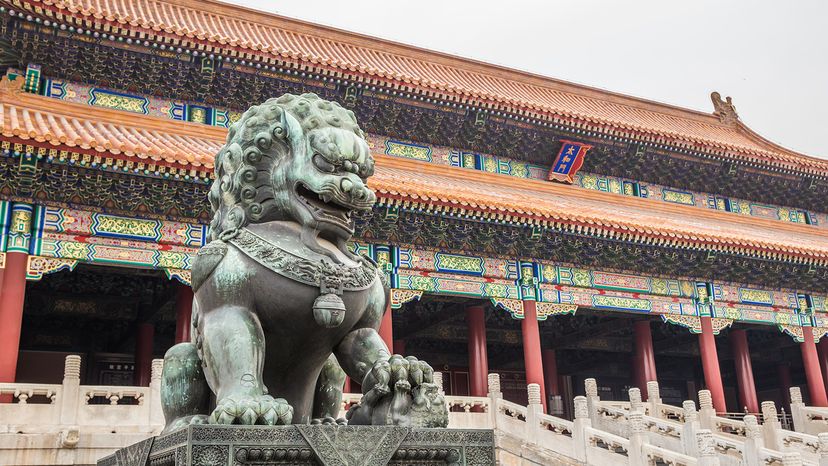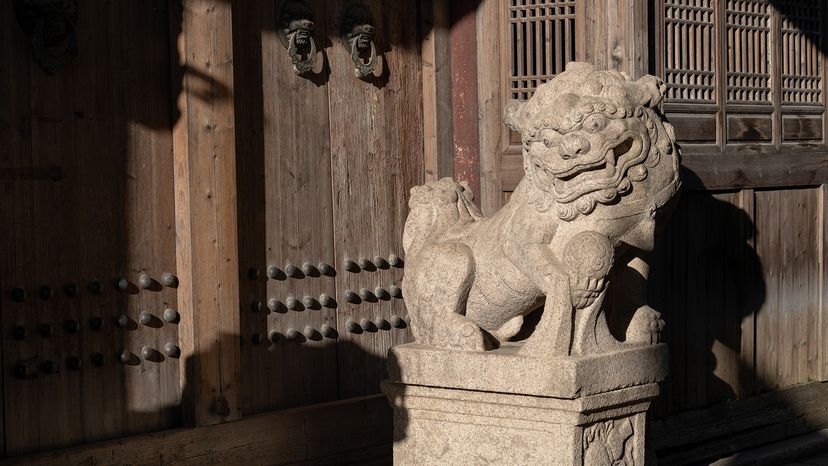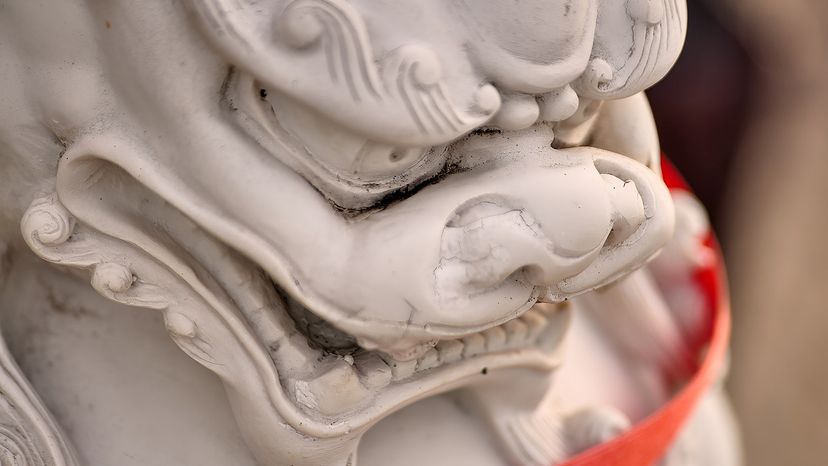Foo dogs became popular in Chinese art and sculptures. They're common outside temples, palaces and government buildings, where their presence signals both spiritual protection and imperial power. The lion imagery in these statues communicates imperial strength and sacred guardianship.
One of the best-known examples can be seen at the Forbidden City in Beijing, where massive bronze lion statues still guard the gates. These sculptures, created during the Ming dynasty and enhanced in later periods, reflect the beliefs and aesthetics of multiple Chinese dynasties.
Carved guardian lions are a familiar sight across East Asia, not just in China. In Japan, their counterparts appear in shrine courtyards, reflecting Japanese culture. In Korea, carved stone guardian animals often stand vigil at tombs and temples.


